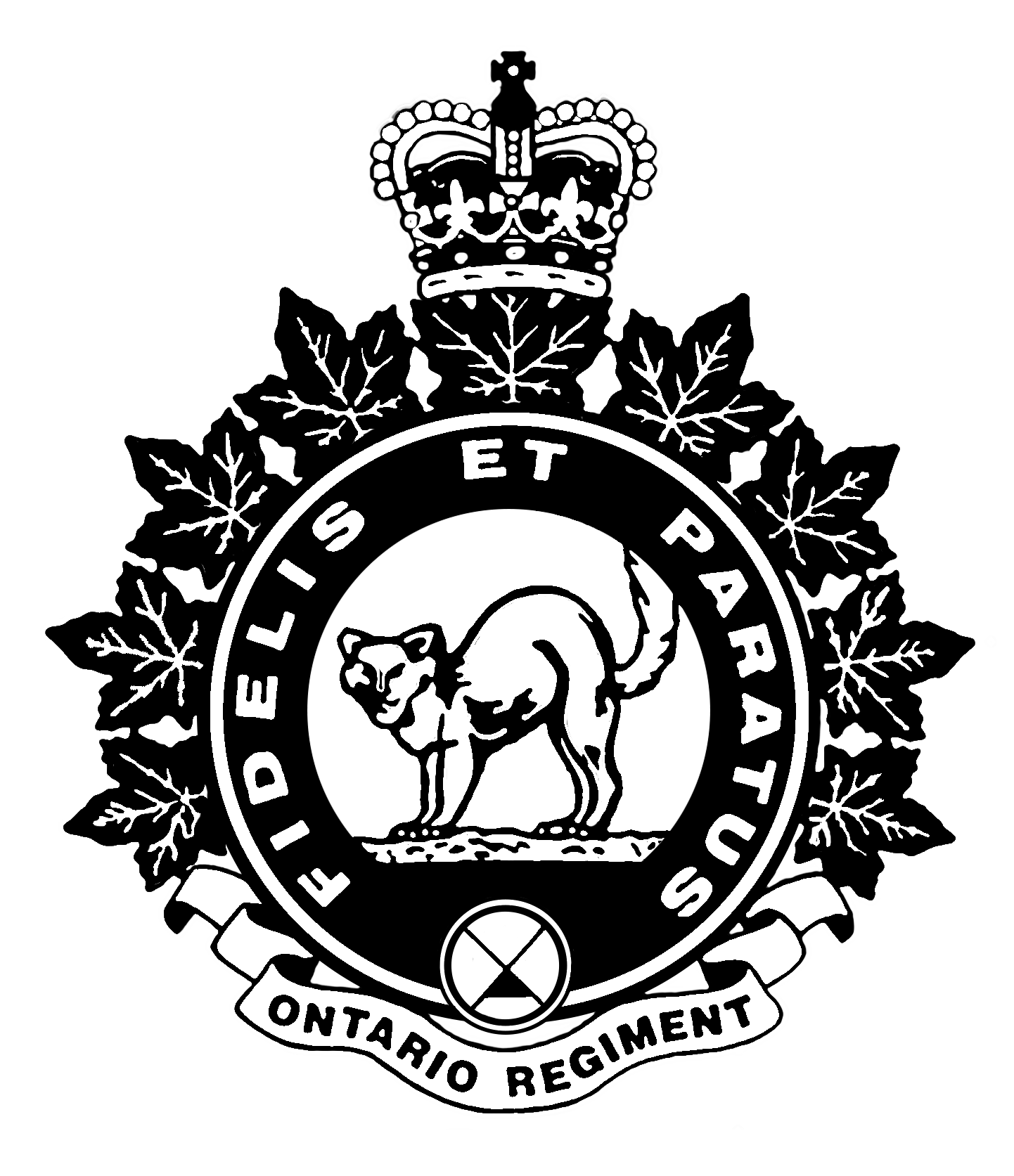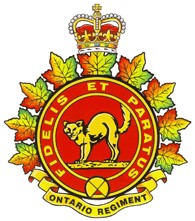It was a period of waiting in the weeks following the cessation of hostilities on 11 November 1918. To fill the time there were sports, ceremonial events and an education program. Lieutenant-Colonel George Pearkes, who had been wounded in September, returned to resume command of the Battalion on 25 November.
At the Battalion’s Christmas dinner, Lieutenant-Colonel Pearkes announced that the 116th would begin a move to the west, in preparation to return to Canada. This announcement was received with great enthusiasm and put the finishing touch on a very enjoyable Christmas Day.
The 116th began their march toward demobilization on 27 December 1918, pausing in Blandain, Belgium for most of January and early February 1919. On 13 February they arrived at Bramshott Camp in England and joined the rest of the 9th Brigade, who had arrived the prior day. The next few weeks were largely spent in documentation and medical boards related to the upcoming demobilization.
The 116th Battalion boarded HMT Olympic on 17 March at Southhampton, the same ship that had brought the Battalion to England in 1917. They arrived at Halifax on 24 March.
Lieutenant-Colonel Pearkes had requested that the 116th Battalion’s demobilization take place in Oshawa instead of at the Toronto demobilization centre, as was scheduled. When this request was turned down, he made a second request that the train stop in Oshawa for two hours on the way to Toronto. This was also turned down due to the congestion it would cause on the railway line.
The 116th traveled back to Ontario on two trains. The first train stopped for ten minutes in Oshawa on 28 March. Lieutenant-Colonel Pearkes and Major Alfred Hind briefly stepped off the train to be greeted by hundreds of citizens. The second train passed though without stopping.

The 116th Battalion Colours arrive at Exhibition Place on 28 March, 1919. They were carried by Lieutenant William Sargent and Lieutenant Edwin Pearson (later commanding officer of the Ontario Regiment). Photo from The 116th Battalion in France.
The 116th arrived in Toronto and marched to the Exhibition grounds, flying their Battalion colours. The Transportation Building was used a demobilization centre and the 116th entered as a band played “John Peel”. The interior of the building was borderline chaos as various battalions arrived and departed throughout the day. Friends and family filled the open space, trying to find their loved ones. Former members of the 116th Battalion who had left for other units, had been wounded or had arrived home earlier for any reason were also on hand to greet their comrades. Former Battalion Medical Officer Captain James Moore was one of these old soldiers. It also included Sergeant A.M. Irwin of Toronto who had lost an eye at Lens.
A few of the returning men of the 116th Battalion were originals who arrived in France in February 1917. This included Major Arthur Pratt, Major Alfred Hind, Lieutenant William Sargent, CQMS Harry Carter, Sergeant-Major Charles Fish, Sergeant-Major Leonard Onions, Sergeant Herbert Cook, Sergeant Thomas Doyle, Sergeant William Edwards, Sergeant Walter Howarth, Sergeant Charles Collins, Sergeant Everett Warne, Private John Byrns, Private Harry Canfield, Private Arthur Atkinson, Private Thomas Price, Private Alex Walker, Private William Thompson, Private Arthur Bouckley, Private Frank Crawford, Private Henry Beard and Private Stephen Butler.
Lieutenant-Colonel Pearkes, who was going to make the military a career, spent much of the day in a quiet part of the Transportation Building. As the men completed their demobilization, each one now a civilian, stopped by and exchanged good-byes with their now former commanding officer. Pearkes greeted each warmly, calling almost everyone by name, shook hands and they offered mutual thanks. At times Pearkes’ voice quivered and he was on the verge of tears. He was heard to say, “You’ve been such pals to me, dear comrades of mine. I just can’t bear to let you go.”
Those who lived in Toronto and points west carried on to their homes; only those from Ontario County would return to Oshawa. About 30 men from the Oshawa area, who were among the first to receive their demobilization papers, arrived at the Oshawa station on the evening of the 28th. They were greeted by the town bands, the mayor and a large group of citizens.
The senior officers and the remainder of the main body of the Battalion, now numbering only about 80, were scheduled to arrive in Oshawa on the 29th for the official reception of the Battalion’s return.

The 116th Battalion marching up Simcoe Street on 29, March 1919. Photo from the Bouckley Collection, the Robert McLaughlin Gallery, Oshawa
Despite it being a cold and windy day, the streets of Oshawa were lined with thousands of people waiting to celebrate the return of the 116th. After disembarking from the train the Battalion formed up for the march to the Oshawa Armoury through the main streets of the city, which were decorated for the occasion. The parade was led by four local bands and the 116th Battalion band, and a large contingent of veterans also formed part of the parade. The Armoury doors were kept closed until the Battalion arrived. An overflowing crowd followed them in and the building was jammed with people who waited to see the Battalion and hear the speeches by the local dignitaries.
Oshawa Mayor John Stacey spoke first and welcomed the Battalion home. He was followed by Colonel (retired) John Farewell who represented the County of Ontario. Lieutenant-Colonel Pearkes made a speech in which he spoke of the deeds of the Battalion and his admiration for Lieutenant-Colonel Sharpe and thanked the County for its support during the war. He then turned the colours of the 116th Battalion over to Lieutenant-Colonel Charles Bick, the commanding officer of the 34th Ontario Regiment, for safekeeping until such time as a decision was made regarding where they would reside. Majors Hind and Pratt also spoke as the senior most officers of the original contingent. Dinner was served that evening for the men who did not live in Oshawa.
At a reception in Uxbridge on 1 April Lieutenant-Colonel Pearkes noted that none of the men of the Battalion returned with an English bride. This fact was covered in the Toronto Daily Star and generated a letter to the editor from “A Canadian Girl” who stated that it was “encouraging for we Canadian girls who had given up hopes of ever enjoying matrimony.” She further commented, “We admire them for their taste and remaining true to the Canadian girls.”
On 2 April Lieutenant-Colonel Pearkes and the 116th Battalion were the guest of honour at a luncheon put on by the City of Toronto and presided over by Mayor Thomas Church. The Town of Oshawa held their own celebratory dinner and dance on April 11.
The men of the 116th Battalion were returning to their civilian lives but they would have been thinking of 497 of their comrades who never returned and are buried in France and Belgium.
Rod Henderson
Rod Henderson is the Regimental Historian of the Ontario Regiment. He served as a Sergeant in the Regiment and is the author of “Fidelis Et Paratus: The History of The Ontario Regiment RCAC”.


